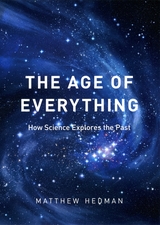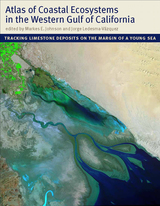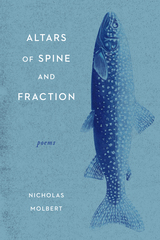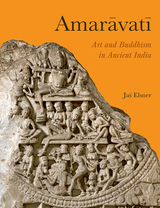157 books about Geology and 2
start with A
157 books about Geology and 2
157 books about Geology
2 start with A start with A
2 start with A start with A

The Age of Everything
How Science Explores the Past
Matthew Hedman
University of Chicago Press, 2007
Taking advantage of recent advances throughout the sciences, Matthew Hedman brings the distant past closer to us than it has ever been. Here, he shows how scientists have determined the age of everything from the colonization of the New World over 13,000 years ago to the origin of the universe nearly fourteen billion years ago.
Hedman details, for example, how interdisciplinary studies of the Great Pyramids of Egypt can determine exactly when and how these incredible structures were built. He shows how the remains of humble trees can illuminate how the surface of the sun has changed over the past ten millennia. And he also explores how the origins of the earth, solar system, and universe are being discerned with help from rocks that fall from the sky, the light from distant stars, and even the static seen on television sets.
Covering a wide range of time scales, from the Big Bang to human history, The Age of Everything is a provocative and far-ranging look at how science has determined the age of everything from modern mammals to the oldest stars, and will be indispensable for all armchair time travelers.
“We are used to being told confidently of an enormous, measurable past: that some collection of dusty bones is tens of thousands of years old, or that astronomical bodies have an age of some billions. But how exactly do scientists come to know these things? That is the subject of this quite fascinating book. . . . As told by Hedman, an astronomer, each story is a marvel of compressed exegesis that takes into account some of the most modern and intriguing hypotheses.”—Steven Poole, Guardian
“Hedman is worth reading because he is careful to present both the power and peril of trying to extract precise chronological data. These are all very active areas of study, and as you read Hedman you begin to see how researchers have to be both very careful and incredibly audacious, and how much of our understanding of ourselves—through history, through paleontology, through astronomy—depends on determining the age of everything.”—Anthony Doerr, Boston Globe
[more]

Atlas of Coastal Ecosystems in the Western Gulf of California
Tracking Limestone Deposits on the Margin of a Young Sea
Edited by Markes E. Johnson and Jorge Ledesma-Vásquez
University of Arizona Press, 2009
The Gulf of California is one of the most beautiful places in the world, but it is also important to earth and marine scientists who work far beyond the area. In text and an accompanying CD-ROM with stunning satellite images, this atlas captures the dynamics of natural cycles in the fertility of the Gulf of California that have been in near-continuous operation for more than five million years. The book is designed to answer key questions that link the health of coastal ecosystems with the region’s evolutionary history: What was the richness of “fossil” ecosystems in the Gulf of California? How has it changed over time? Which ecosystems are most amenable to conservation?
With an emphasis on the intricate workings of the Gulf, a team of scientists led by Markes E. Johnson and Jorge Ledesma-Vázquez explores how marine invertebrates such as corals and bivalves, as well as certain algae, contribute to the operation of a vast “organic engine” that acts as a significant carbon trap. The Atlas reveals that the role of these organisms in the ecology of the Gulf was greatly underestimated in the past. The organisms that live in these environments (or provide the sediments for beaches and dunes) are mass producers of calcium carbonate. Until now, no book has considered the centrality of calcium carbonate production as it functions today across multiple ecosystems and how it has evolved over time.
An important work of scholarship that also evokes the region’s natural splendor, the Atlas will be of interest to a wide range of scientists, including geologists, paleontologists, marine biologists, ecologists, and conservation biologists.
With an emphasis on the intricate workings of the Gulf, a team of scientists led by Markes E. Johnson and Jorge Ledesma-Vázquez explores how marine invertebrates such as corals and bivalves, as well as certain algae, contribute to the operation of a vast “organic engine” that acts as a significant carbon trap. The Atlas reveals that the role of these organisms in the ecology of the Gulf was greatly underestimated in the past. The organisms that live in these environments (or provide the sediments for beaches and dunes) are mass producers of calcium carbonate. Until now, no book has considered the centrality of calcium carbonate production as it functions today across multiple ecosystems and how it has evolved over time.
An important work of scholarship that also evokes the region’s natural splendor, the Atlas will be of interest to a wide range of scientists, including geologists, paleontologists, marine biologists, ecologists, and conservation biologists.
[more]
READERS
Browse our collection.
PUBLISHERS
See BiblioVault's publisher services.
STUDENT SERVICES
Files for college accessibility offices.
UChicago Accessibility Resources
home | accessibility | search | about | contact us
BiblioVault ® 2001 - 2024
The University of Chicago Press









